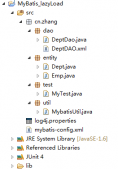本文为大家介绍了java实现字符串排列组合问题,供大家参考,具体内容如下
|
1
2
3
4
5
6
7
8
9
10
11
12
13
14
15
16
17
18
19
20
21
22
23
24
25
26
27
28
29
30
31
32
33
34
35
36
37
38
39
40
41
42
43
44
45
46
47
48
49
50
51
52
53
54
55
56
57
58
59
60
61
62
63
64
65
66
|
import java.util.ArrayList; import java.util.Collections; /** * 输入一个字符串,按字典序打印出该字符串中字符的所有排列。例如输入字符串abc,则打印出由字符a,b,c所能排列出来的所有字符串abc,acb,bac, * bca,cab和cba。 * * @author pomay * */public class Solution_stringarrange { public ArrayList<String> Permutation(String str) { if (str == null) return null; ArrayList<String> list = new ArrayList<String>(); char[] pStr = str.toCharArray(); Permutation(pStr, 0, list); Collections.sort(list); return list; } static void Permutation(char[] str, int i, ArrayList<String> list) { // 如果为空 if (str == null) return; // 如果i指向了最后一个字符 if (i == str.length - 1) { if (list.contains(String.valueOf(str))) return; list.add(String.valueOf(str)); } else { // i指向当前我们做排列操作的字符串的第一个字符 for (int j = i; j < str.length; j++) { // 把做排列操作的字符串的第一个字符和后面的所有字符交换 char temp = str[j]; str[j] = str[i]; str[i] = temp; // 交换后对i后面的字符串递归做排列操作 Permutation(str, i + 1, list); // 每一轮结束后换回来进行下一轮排列操作 temp = str[j]; str[j] = str[i]; str[i] = temp; } } } public static void main(String[] args) { String str = "aab"; Solution_stringarrange changestring = new Solution_stringarrange(); ArrayList<String> list = changestring.Permutation(str); for (int i = 0; i < list.size(); i++) { System.out.print(list.get(i) + " "); } } } |
组合:
要么选择长度为n的字符串中的第一个字符,那么要在其余的长度n-1的字符串中选择m-1个字符
要么不选择长度为n的字符串中的第一个字符,那么要在其余的长度n-1的字符串中选择m个字符
|
1
2
3
4
5
6
7
8
9
10
11
12
13
14
15
16
17
18
19
20
21
22
23
24
25
26
27
28
29
30
31
32
33
34
35
36
37
38
39
40
41
42
43
44
45
46
47
48
49
50
51
52
53
54
55
|
import java.util.ArrayList; import java.util.List; /** * 输入一个字符串,按字典序打印出该字符串中字符的所有组合。例如输入字符串abc,则打印出由字符a,b,c所能排列出来的所有字符串a,b,c,ab,ac,bc * ,abc 。 求n个字符组成长度为m的组合问题 * * @author pomay * */public class Solution_stringcombination { // 求字符串中所有字符的组合abc>a,b,c,ab,ac,bc,abc public static void perm(String s) { List<String> result = new ArrayList<String>(); // 从一个开始 for (int i = 1; i <= s.length(); i++) { combination(s, i, result); } } // 从字符串s中选择m个字符 public static void combination(String s, int m, List<String> result) { // 如果m==0,则递归结束。输出当前结果 if (m == 0) { for (int i = 0; i < result.size(); i++) { System.out.print(result.get(i)); } System.out.print("、"); return; } if (s.length() != 0) { // 选择当前元素 result.add(s.charAt(0) + ""); // substring用法,截取出从1开始到n结束的字符串 combination(s.substring(1, s.length()), m - 1, result); result.remove(result.size() - 1); // 不选当前元素 combination(s.substring(1, s.length()), m, result); } } public static void main(String[] args) { String str = "abc"; perm(str); } } |
以上就是本文的全部内容,希望对大家的学习有所帮助,也希望大家多多支持服务器之家。
原文链接:http://blog.csdn.net/pomay/article/details/72845363


















